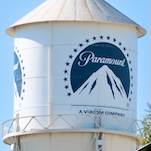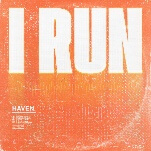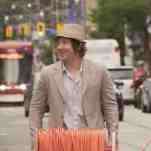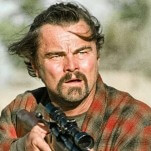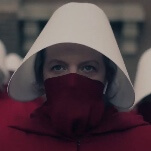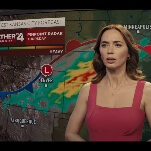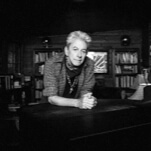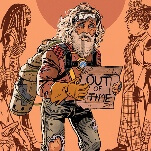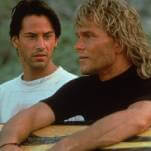The first scene in Martin Scorsese's debut feature, Who's That Knocking At My Door, shows Scorsese's real-life mother baking a meal for her children, revealing each step in the process with unusual specificity. With its simple evocation of a lower-class Italian family in New York City, the sequence sets the tone for an astonishing career to come, one that puts a premium on getting the details right and using cinema as a means of personal expression. From these embryonic beginnings, Scorsese set off on a journey that has led him to such far-flung places as 19th-century high society in The Age Of Innocence and the mountains of Tibet in Kundun. But no matter where he goes, his films always circle back home. He remains one of the few directors whose work would be easy to identify even if his name were removed from the opening titles.
On the commentary track for Knocking, Scorsese recalls (and agrees with) the film's New York Film Festival rejection letter, which suggested he was "living aesthetically beyond [his] means." But before long, his abilities caught up with his ambitions. Though Scorsese can hardly stand to watch his NYU thesis project today ("It's like opening up your high-school yearbook"), his signature hallmarks are already in place: the street-level depiction of criminality, the restless camerawork and stylistic experimentation, the ironic overlay of pop songs, and the tortured, primitive heroes who grapple with guilt, faith, and inscrutable women. The raw, unformed story—refined to greater effect in his 1973 breakthrough Mean Streets—concerns the sexual hang-ups of Scorsese alter ego Harvey Keitel, as he learns that his girlfriend was once raped. Shot in several stages over weekends and later distributed with a nude scene inserted for the exploitation crowd, the film never jells, but it's the Rosetta Stone for Scorsese's later work.
After a detour through Roger Corman's low-budget film school, where he emerged with Boxcar Bertha ("You just spent a year of your life making a piece of shit," John Cassavetes told him), Scorsese returned with Mean Streets, a galvanizing piece of personal filmmaking. The divergent moral codes of the church and the street haunt Keitel as he navigates the vice-ridden world of a low-level gangster while groping haplessly for salvation. Charged by the whip-crack juxtaposition of violence and humor, innovative use of voiceover, and a vivid depiction of Italian-American life, Mean Streets also begins Scorsese's long collaboration with Robert De Niro, whose screw-up hoodlum forces Keitel into permanent exile. Before he sunk too deeply into Method acting (and accepted too many unworthy roles), the Mean Streets-era De Niro was a wiry, volatile screen presence, possessing a dangerous charisma that has evaporated slightly over time.
A true auteur, Scorsese put his distinctive stamp on his projects, including the stellar director-for-hire work on 1974's Alice Doesn't Live Here Anymore and 1985's After Hours. Alice's story of female independence and self-realization inspired an awful sitcom, but Scorsese and star Ellen Burstyn give the film an edgy, foul-mouthed toughness that's resolutely unfit for television. Even today, the film seems shockingly filthy for a such a soft-hearted tale of single motherhood: Burstyn unhesitatingly hails abuses on her bratty son (Alfred Lutter), who returns them in kind, and her romance with sensitive rancher Kris Kristofferson evolves on her terms. Since women are usually such foreign creatures in Scorsese's work, he seemed an unlikely choice to direct Burstyn's feminist vehicle, but his aggressive style suits her uncompromising character.
Reeling from a series of flops in the late '70s and early '80s, Scorsese admits he felt out of touch with the new blockbuster-driven studio system, so he retreated to his independent roots with After Hours, a caffeinated black comedy with an emphasis on speed. With a small crew and a tight shooting schedule, Scorsese transformed limited means into a staccato burst of creative energy, playing up the extreme paranoia and frustration of a data processor (Griffin Dunne) stranded in Soho. His simple desire for a sexy bohemian (Rosanna Arquette) in a restaurant leads to a punishment that far exceeds the crime, as his evening becomes a nightmare of crazy women (Linda Fiorentino, Teri Garr, Catherine O'Hara) and cosmic disaster. To maintain the breakneck pace, Scorsese and longtime editor Thelma Schoonmaker slashed 45 minutes from the original cut, so the DVD's deleted scenes are of unusually high quality.
By the time he got around to his 1990 masterpiece GoodFellas, Scorsese had permanently graduated into high-budget studio filmmaking, but his grunt's-eye view of gangster life distinguishes the film from the more stately, luxuriant Godfather movies. Based on the memoir of mafia thug turned government witness Henry Hill, who reminisces on one of two commentary tracks, GoodFellas dazzles foremost as a piece of pure craftsmanship. In tracking Ray Liotta's Hill as he works his way up through the organization, conspires with vicious lowlifes played by De Niro and an unforgettable Joe Pesci, and suffers a precipitous fall from grace, the film's style and texture shifts with the times. Moving from the romanticized first half to the fractured, jittery closing act, Scorsese adds Hill to a long list of consummate outsider heroes, bringing the audience closer to understanding a fringe-dweller who was seduced and abandoned by "the life."





